Tamron SP 35 mm f/1.8 Di VC USD
3. Build quality and image stabilization
In the photo below the Tamron SP 35 mm f/1.8 Di VC USD is positioned next to its direct rivals so the Canon EF 35 mm f/2 IS USM and the Sigma A 35 mm f/1.4 DG HSM.
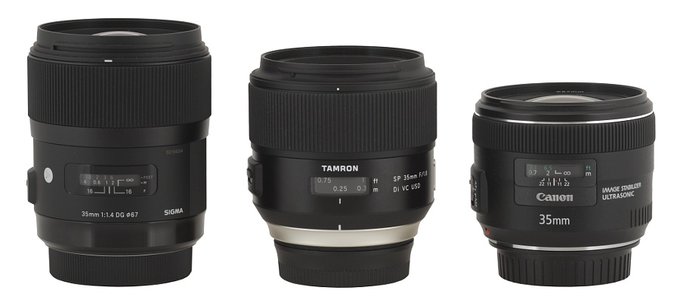 |
Please Support UsIf you enjoy our reviews and articles, and you want us to continue our work please, support our website by donating through PayPal. The funds are going to be used for paying our editorial team, renting servers, and equipping our testing studio; only that way we will be able to continue providing you interesting content for free. |
- - - - - - - - - - - - - - - - - - - - - - - - - - - - - - - - - - - - - - - - - - - - - - - -
The tested lens starts with a metal mount which surrounds the contacts and a rear element, almost 28 mm in diameter. That element is positioned on the same level as the contacts at infinity. When you pass to the minimum focusing distance it hides inside the casing near 2 cm deep, revealing a nicely darkened and matted inner tube, covered by ribs. It features small arches through which you can notice some small electronic components but even them are darkened where it was only possible.
 |
A rubber gasket joined with a silver, immobile ring made of metal is the first part of the proper casing. That ring turns into a smooth, black body of the lens with a white mark making the alignment with a camera easier. Above that mark you see a distance scale behind a window, expressed in feet and meters. Looking from above, on the right of the window you can find the name and the parameters of the lens along with a silver ‘SP’ badge. On the left side there is a focusing mechanism mode switch (AF/MF) and a stabilization switch (VC ON/OFF). Further on there is a piece of information that the lens was not only designed but also made in Japan.
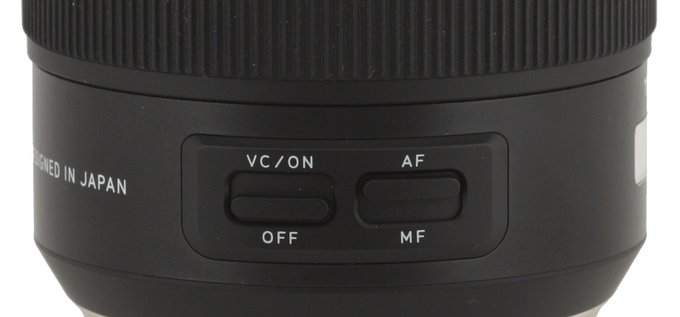 |
The focusing ring is the next part of the lens, as wide as 29 mm and completely covered by ridged, rubberized armour. It works evenly and is properly damped. Running through the whole distance scale needs a turn through an angle of 190 degrees. It is a significant value, allowing you very precise manual settings.
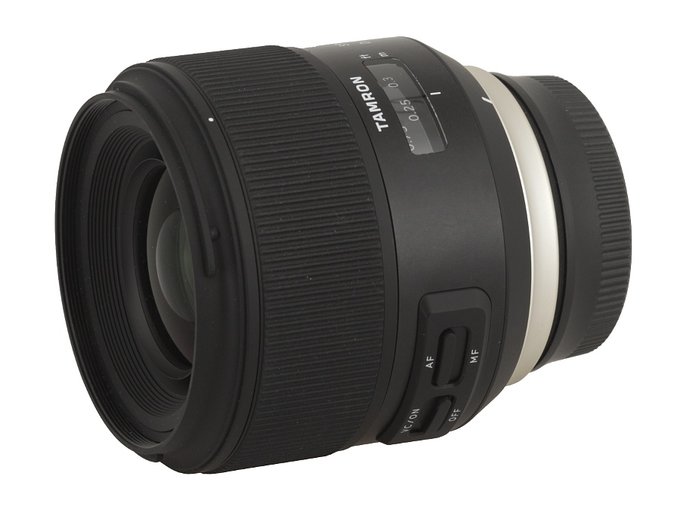 |
Behind the focus ring you also find a hood mount with a non-rotating filter thread inside so you can attach filters with a diameter of 67 mm.
The front element is over 4 cm in diameter and it is a bit hidden inside the black, ribbed tube with the focus set at infinity. When you decrease the distance from the photographed object it comes out of the casing and, at 0.2 of a meter, it is positioned almost on the same level as the filter thread.
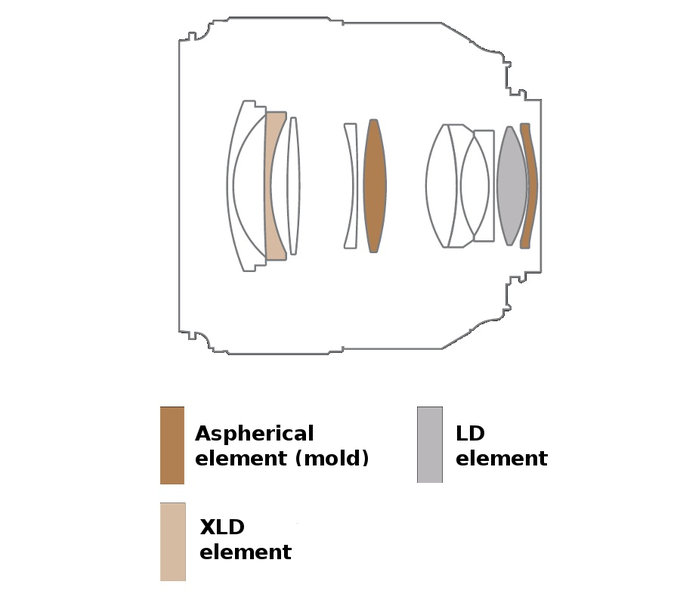 |
The elements are covered by special coatings: eBAND (Extended Bandwidth & Angular-Dependency ) and BBAR (Broad-Band Anti-Reflection) which are supposed to guarantee a high level of transmission and a good performance against bright light without any ghosting or flare. Additionally the outer lenses feature fluorine hydrophobic coatings to repel water, fingerprints and smudges.
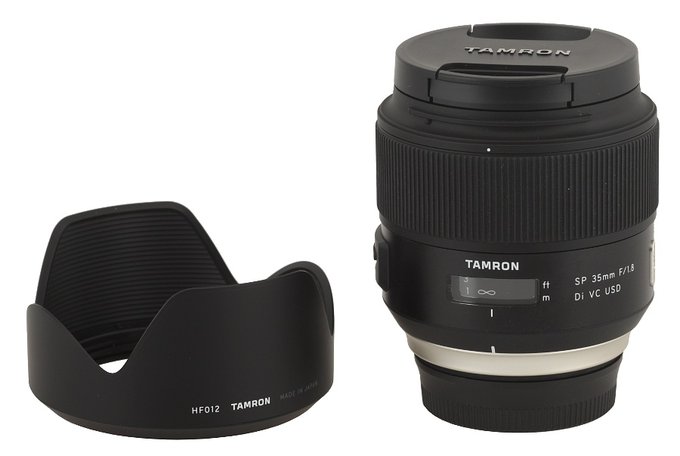 |
Buyers get both caps and a hood in the box. It is a pity the producer didn’t decide to add a pouch or a case to that bundle. Sigma offers a hard case with similar pieces of equipment; even buying the Nikkor AF-S 35 mm f/1.8G you get a soft pouch. Only the Canon EF 35 mm f/2 IS USM fares worse than the tested lens as its frugal producer adds just two caps.
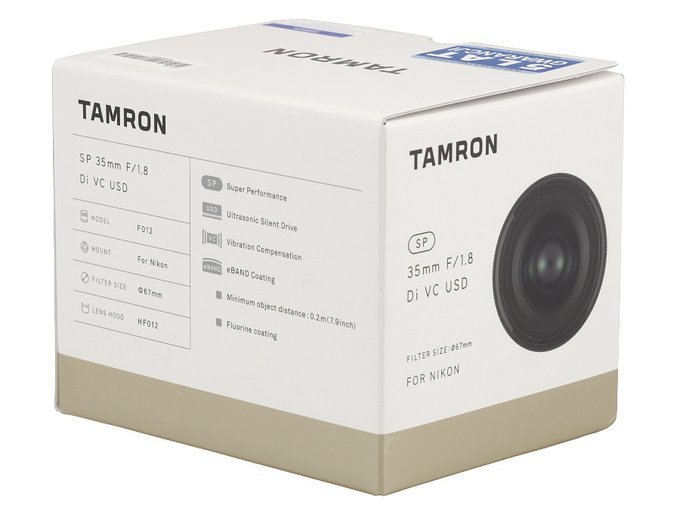 |
The new line of lenses was also given new, stylish boxes with toned-down colours.
Optical stabilization
The Tamron 1.8/35 features a built-in Vibration Compensation system and its declared efficiency is supposed to amount to 3 EV stops. Of course we didn’t hesitate to check that claim. In order to do so we took several dozen of shots with exposure times ranging from 1/40 to one second with the stabilization switched on and off. Then we determined the percentage of blurred photos at every shutter speed and presented it as a function of that speed, expressed in EV (with 0 EV being an equivalent of 1/30 of a second). The graph below shows our results.
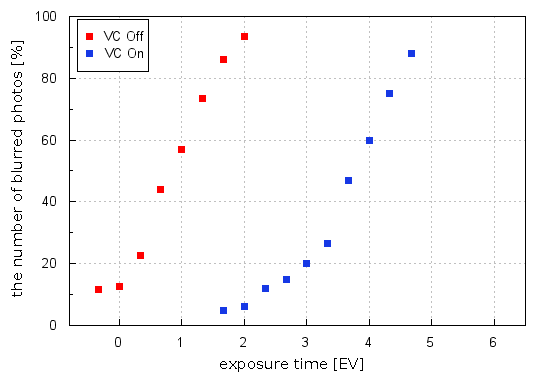
The maximum distance between both curves amounts to almost 3 EV and such is, according to our test, the efficiency of the stabilization mechanism. As you see the declarations of the producer and real life values match more or less and these values are additionally good so the lens should be assessed positively in this category.






